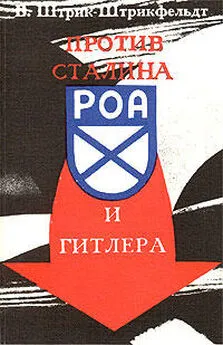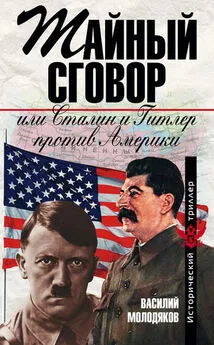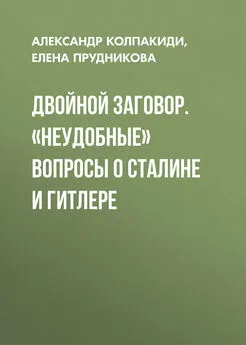Ричард Овери - Сталин и Гитлер
- Название:Сталин и Гитлер
- Автор:
- Жанр:
- Издательство:АСТ
- Год:2015
- Город:Москва
- ISBN:978-5-17-082961-3
- Рейтинг:
- Избранное:Добавить в избранное
-
Отзывы:
-
Ваша оценка:
Ричард Овери - Сталин и Гитлер краткое содержание
Что это были за личности?
Какими были методы их правления?
В чем мораль диктатуры как таковой и к чему она ведет?
На эти и другие наболевшие вопросы отвечает известный британский историк, автор крупных работ по истории Второй мировой войны Ричард Овери.
При сравнение и сопоставление двух режимов Овери рассматривает степень и характер народной поддержки, очаги противостояния и сопротивления, путь к власти каждого из диктаторов и процесс формирования культа личности и т. д.
Сталин и Гитлер - читать онлайн бесплатно полную версию (весь текст целиком)
Интервал:
Закладка:
Sofsky, W. The Order of Terror: The Concentration Camp (Princeton, NJ, 1997).
Sohn-Rethel, A. Economy and Class Structure of German Fascism (London, 1978).
Sokolov, B. The Cost of War: Human Losses for the USSR and Germany 1939–1945’, Journal of Slavic Military Studies, 9 (1996),
pp. 152–93.
Sokolov, B. ‘Lend Lease in Soviet Military Efforts 1941–1945’, Journal of Slavic Military Studies, 7 (1994), pp. 120–51.
Solomon, P. H. Soviet Criminal Justice Under Stalin (Cambridge, 1996).
Solomon, S. G. The demographic argument in Soviet debates over the legalization of abortion in the 1920s’, Cahiers du monde russe,
33 (1992), pp. 59–82.
Solzhenitsyn, A. The Gulag Archipelago (3 vols, London, 1973–8).
Sorenson, J. B. The Life and Death of Soviet Trade Unionism 1917–1928 (New York, 1969).
Sorokin, P. The Sociology of Revolution (New York, 1967).
Soyfer, V. N. Lysenko and the Tragedy of Soviet Science (New Brunswick, NJ, 1994).
Spotts, F. Hitler and the Power of Aesthetics (London, 2002).
Stachura, P. Gregor Strasser and the Rise of Nazism (London, 1983).
Starkov, B. The Trial that was not Held’, Europe – Asia Studies, 46 (1994), pp.1297–315.
Starkov, B. Trotsky and Ryutin: from the history of the anti-Stalin resistance in the 1930s’, in T. Brotherstone and P. Dukes (eds) The
Trotsky Reappraisal (Edinburgh, 1992), pp. 70–83.
Staudinger, H. The Inner Nazi: a critical analysis of Mein Kampf (London, 1981).
Steinbach, P. and Tuchel, J. (eds) Widerstand in Deutschland 1933–1945 (Munich, 1994).
Steinberg, M. D. Proletarian Imagination: Self, Modernity and the Sacred in Russia, 1910–1925 (Ithaca, NY, 2002).
Steinweis, A. E. Art, Ideology and Economics in Nazi Germany: the Reich Chambers of Music, Theater, and the Visual Arts
(Chapel Hill, NC, 1993).
Steinweis, A. E. ‘Weimar Culture and the Rise of National Socialism: the Kampfbund für deutsche Kultur’, Central European History,
24 (1991), pp. 402–23.
Stephan, J. J. The Russian Fascists: Tragedy and Farce in Exile 1925–1945 (London, 1978).
Stephens, F. J. Hitler Youth: History, Organisation, Uniforms and Insignia (London, 1973).
Stephenson, J. The Nazi Organisation of Women (London, 1981).
Stephenson, J. ‘Propaganda, Autarky and the German Housewife’, in D. Welch (ed.) Nazi Propaganda (London, 1983),
pp. 117–42.
Stephenson, J. Women in Nazi Germany (London, 1975).
Stern, J. P. Hitler, the Führer, and the People (London, 1976).
Stettner, R. ‘Archipel GULag’: Stalins Zwangslager – Terrorinstrument und Wirtschaftsgigant (Paderborn, 1996).
Stites, R. (ed.) Culture and Entertainment in Wartime Russia (Bloomington, Ind., 1995).
Stites, R. Revolutionary Dreams: Utopian Vision and Experimental Life in the Russian Revolution (Oxford, 1989).
Stites, R. Russian Popular Culture: Entertainment and Society since 1900 (Cambridge, 1992).
Stollies, M. The Law under the Swastika: Studies in Legal History in Nazi Germany (Chicago, 1998).
Stoltzfus, M. Resistance of the Heart: Intermarriage and the Rosenstrasse Protest in Nazi Germany (New York, 1996).
Stommer, R. ‘“Da oben versinkt einem der Alltag…,” Thingstätten im Dritten Reich als Demonstration der Volksgemeinschaftsideologie’,
in D. Peukert and J. Reulecke (eds) Die Reihen fast geschlossen: Beiträge zur Geschichte des Alltags unterm
Nationalsozialismus (Wuppertal, 1981), pp. 149–74.
Stone, D. R. Hammer and Rifl e: the Militarization of the Soviet Union 1926–1933 (Lawrence, Kans., 2000).
Storr, A. (ed.) The Essential Jung: Selected Writings (London, 1983).
Strätz, H. W. ‘Die studentische Aktion wider den undeutschen Geist’, Vierteljahrshefte für Zeitgeschichte, 16 (1968),
pp. 347–72.
Straus, K. M. Factory and Community in Stalin’s Russia: The making of an industrial working class (Pittsburgh, 1997).
Streim, A. Sowjetische Gefangene in Hitlers Vernichtungskrieg: Berichte und Dokumente (Heidelberg, 1982).
Streit, C. Keine Kameraden: die Wehrmacht und die sowjetischen Kriegsgefangenen 1941–1945 (Stuttgart, 1978).
Streit, C. ‘Die sowjetischen Kriegsgefangenen in den deutschen Lagern’, in D. Dahlmann and G. Hirschfeld (eds) Lager, Zwangsarbiet,
Vertreibung und Deportation (Essen, 1999), pp. 403–14.
Sutela, P. Socialism, Planning and Optimality: a Study in Soviet Economic Thought (Helsinki, 1984).
Sutton, A. C. Western Technology and Soviet Economic Development 1930 to 1945 (Stanford, 1971).
Swayze, H. Political Control of Literature in the USSR 1946–1959 (Cambridge, Mass., 1962).
Sword, K. Deportation and Exile: Poles in the Soviet Union, 1939–48 (London, 1994).
Sword, K. (ed.) The Soviet Takeover of the Polish Eastern Provinces 1939–1941 (London, 1991).
Syring, E. Hitler: seine politische Utopie (Frankfurt am Main, 1994).
Szamuely, T. ‘The Elimination of Opposition between the Sixteenth and Seventeenth Congresses of the CPSU’, SovietStudies, 17
(1966), pp. 318–38.
Szejnmann, C.-C. Nazism in Central Germany: the Brownshirts in ‘Red’ Saxony (Oxford, 1999).
Szöllösi-Janze, M. (ed.) Science in the Third Reich (Oxford, 2001).
Szporluk, R. ‘Nationalism and communism: refl ections: Russia, Ukraine, Belarus and Poland’, Nations and Nationalism, 4 (1998),
pp. 301–20.
Tait, A. L. ‘Lunacharsky: a “Nietzschean Marxist”?’ in B. G. Rosenthal Nietzsche in Russia (Princeton, NJ, 1986), pp. 275–92.
Tarleton, R. E. ‘What Really Happened to the Stalin Line?’ Journal of Slavic Military Studies, 6 (1993), pp. 21–61.
Taylor, B. and van der Will, W. (eds) The Nazifi cation of Art: Art, Design, Music, Architecture and Film in the Third Reich
(Winchester, 1990).
Taylor, R. Film Propaganda in Soviet Russia and Nazi Germany (London, 1998).
Taylor, R. Literature and Society in Germany 1918–1945 (Brighton, 1980).
Taylor, R. The Politics of the Soviet Cinema (London, 1979).
Taylor, R. and Spring, D. (eds) Stalinism and Soviet Cinema (London, 1993).
Temin, P. ‘Soviet and Nazi economic planning in the 1930s’, Economic History Review, 44 (1991), pp. 573–93.
Thamer, H.-U. Verführung und Gewalt: Deutschland 1933–1945 (Berlin, 1986).
Theweleit, K. Male Fantasies. Male bodies: psychoanalysing the white terror (Oxford, 1989).
Thies, J. ‘Nazi Architecture – a Blueprint for World Domination: the Last Aims of Adolf Hitler’, in D.Welch (ed.) Nazi Propaganda
(London, 1983), pp. 45–64.
Thurner, E. National Socialism and Gypsies in Austria (Tuscaloosa, Ala., 1998).
Thurston, R. W. Life andTerror in Stalin’s Russia 1934–1941 (London, 1996).
Thurston, R. W. ‘Social Dimensions of Stalinist Rule: Humor and Terror in the USSR, 1935–1941’, Journal of Social History, 24
(1990/1), pp. 541–62.
Todorov, T. Facing the Extreme: Moral Life in the Concentration Camps (New York, 1996).
Todorov, T. Hope and Memory: Refl ections on the Twentieth Century (London, 2003).
Tolz, V. ‘New Information about the Deportations of Ethnic Groups in the USSR during World War 2’, in J. Garrard and C. Garrard
(eds) World War 2 and the Soviet People (London, 1993), pp. 161–79.
Tompsen, W. Khrushchev (London, 1994).
Tooze, J. A. Statistics and the German State, 1900–1945: the Making of Modern Economic Knowledge (Cambridge, 2001).
Tregub, S. The Heroic Life of Nikolai Ostrovsky (Moscow, 1964).
Tröger, A. The Creation of a Female Assembly-Line Proletariat’, in R. Bridenthal, A. Grossmann and M. Kaplan (eds) When Biology
became Destiny: Women in Weimar Germany and Nazi Germany (New York, 1984), pp. 237–70.
Tuchel, J. ‘Dimensionen des Terrors: Funktionen der Konzentrationslager in Deutschland 1933–1945’, in D. Dahlmann and G.
Hirschfeld (eds) Lager, Zwangsarbeit, Vertreibung und Deportation (Essen, 1999), pp. 371–91.
Tuchel, J. Konzentrationslager: Organisationsgeschichte und Funktion der Inspektion der Konzentrationslager’ 1934–1938
(Boppard am Rhein, 1991).
Tucker, R. Stalin as Revolutionary, 1879–1929 (New York, 1974).
Tucker, R. Stalin in Vower: the Revolution from Above, 1928–1941 (New York, 1990).
Tucker, R. (ed.) Stalinism: Essays in Historical Interpretation (New York, 1977).
Tumarkin, N. Lenin Lives! The Lenin Cult in Soviet Russia (Cambridge, Mass., 1997).
Ueberschär, G. and Bezymenski, L. A. (eds) Der deutsche Angriff auf die Sowjetunion 1941: Die Kontroverse um die
Präventivkriegsthese (Darmstadt, 1998).
Ueberschär, G. and Wette, W. (eds) ‘Unternehmen Barbarossa’: Der deutsche Überfall auf die Sowjetunion (Paderborn, 1994).
Ulam, A. Lenin and the Bolsheviks (London, 1965).
Ulam, A. Stalin: The Man and His Era (London, 1973).
Usborne, C. The Politics of the Body in Weimar Germany; Women’s Reproductive Rights and Duties (London, 1992).
Vaksberg, A. The Prosecutor and the Prey: Vyshinsky and the 1930s Moscow Show Trials (London, 1990).
Vaksberg, A. Stalin against the Jews (New York, 1994).
Van Dyke, C. ‘The Timoshenko Reforms March-July 1940’, Journal of Slavic Military Studies, 9 (1996), pp. 69–96.
Vardys, V. The Baltic States under Stalin: the First Experience 1939–1941’, in K. Sword (ed.) The Soviet Takeover of the Polish
Eastern Provinces 1939–1941 (London, 1991), pp. 268–90.
Vieler, E. H. The Ideological Roots of German National Socialism (New York, 1999).
Viola, L. The Best Sons of the Fatherland: Workers in the Vanguard of Soviet Collectivization (New York, 1987).
Viola, L. (ed.) Contending with Stalinism: Soviet Power and Popular Resistance in the 1930s (Ithaca, NY, 2002).
Viola, L. Peasant Rebels under Stalin: Collectivization and the Culture of Peasant Resistance (New York, 1996).
Volkogonov, D. Stalin: Triumph and Tragedy (London, 1991).
Volkogonov, D. Trotsky: the Eternal Revolutionary (London, 1996).
Volkov, V. K. ‘Soviet-German Relations during the Second Half of 1940’, Voprosii istorii, 2 (1997), pp. 3–18.
Vopel, S. ‘Radikaler, völkischer Nationalismus in Deutschland 1917–1933’, in H. Timmermann (ed.) Nationalismus und
Nationalbewegung in Europa 1914–1945 (Berlin, 1999).
Vorländer, H. Die NSV: Darstellung und Dokumentation einer nationalsozialistischen Organisation (Boppard am Rhein, 1988).
Vorsin, V. F. ‘Motor Vehicle Transport Deliveries through “Lend-Lease”’, Journal of Slavic Military Studies, 10 (1997), pp.?
Voslensky, M. Nomenklatura: Anatomy of the Soviet Ruling Class (London, 1984).
Wachsmann, N. ‘“Annihilation through Labor”: The Killing of State Prisoners in the Third Reich’, Journal of Modern History, 71
(1999), pp. 624–59.
Watson, D. Molotov and Soviet Government: Sovnarkom, 1930–41 (London, 1996).
Wegner, B. (ed.) From Peace to War: Germany, Soviet Russia and the World 1939–1941 (Providence, RI, 1997).
Wegner, B. Hitlers politische Soldaten: Die Waffen-SS 1933–1945 (Paderborn, 1992).
Weinberg, R. ‘Purge and Politics on the Periphery: Birobidzhan in 1937’, Slavic Review, 52 (1993), pp. 13–27.
Weindling, P. Health, Race and German Politics between National Unifi cation and Nazism 1870–1945 (Cambridge, 1989).
Weiner, A. The Making of a Dominant Myth: the Second World War and the Construction of Political Identities within the Soviet
Polity’, Russian Review, 55 (1996), pp. 638–60.
Weiner, A. Making Sense of War: The Second World War and the Fate of the Bolshevik Revolution (Princeton, NJ, 2001).
Читать дальшеИнтервал:
Закладка:







